Wondered how we manufacture bandstand scaffolds?
In this article, we introduce you to parts of the process for manufacturing the bandstand system, specifically the bandstand scaffolds themselves.
But first, what is the bandstand system?
It is a temporary, low-level working platform (with a standing height of up to 1040 mm) constructed with a metal frame, called trestles or brandstands.
These metal frames serve as support for staging boards (you can learn how we manufacture the staging boards here), providing operators with up to 7200 mm of working space alongside a wall, for instance.
At LEWIS Access, we manufacture three standing height sizes:

- 1040 mm
- 880 mm
- 710 mm
And, we show you how it’s made.
Table of Contents
Watch How Bandstand Scaffolds Are Made
Bandstand Scaffolds Component Preparation
Before we start using our welding machine, we must prepare the components:
Component 1: Legs
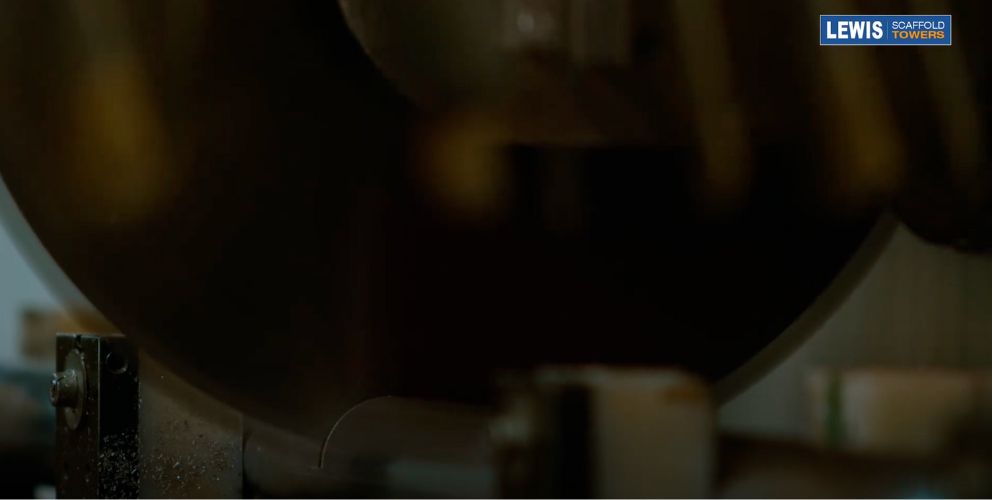
Aluminium tubes are cut to sizes of either 1040, 880, or 710 mm, depending on the size of the bandstand being manufactured.
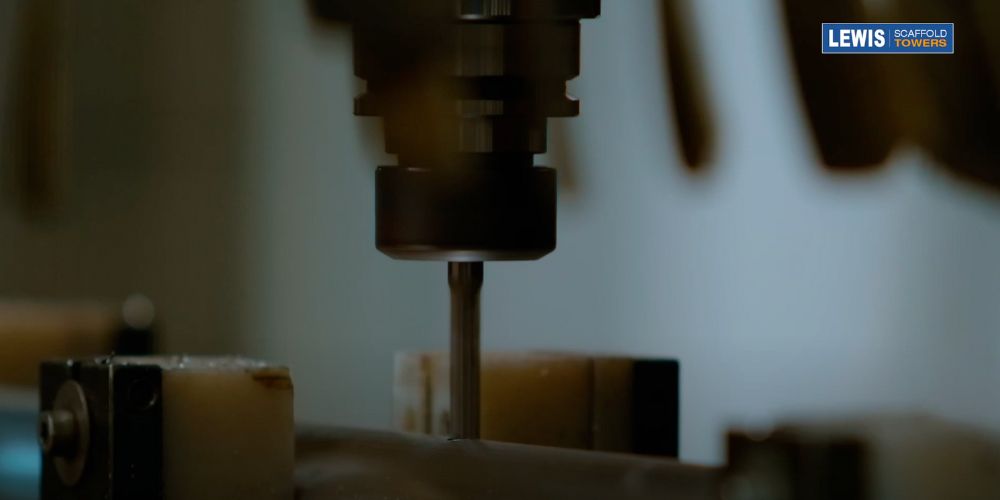
A dotted incision is then made from one side through to the other side of the tube. These tubes form the legs of the bandstand.
Component 2: Diagonal Support Braces
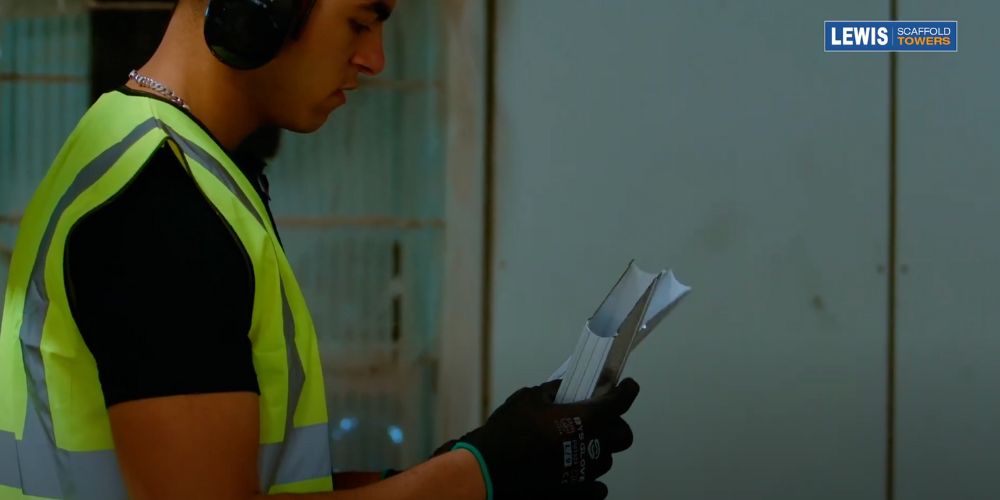
The diagonal support brace is one of the most intricate parts of the process because the machine must cut the exact radius of the tube. This way, the diagonal support brace snugly fits against the vertical leg of the bandstand to provide stability while preventing distortion. It is welded to the horizontal stabiliser bar and the vertical leg.
Component 3: Horizontal Notched Braces
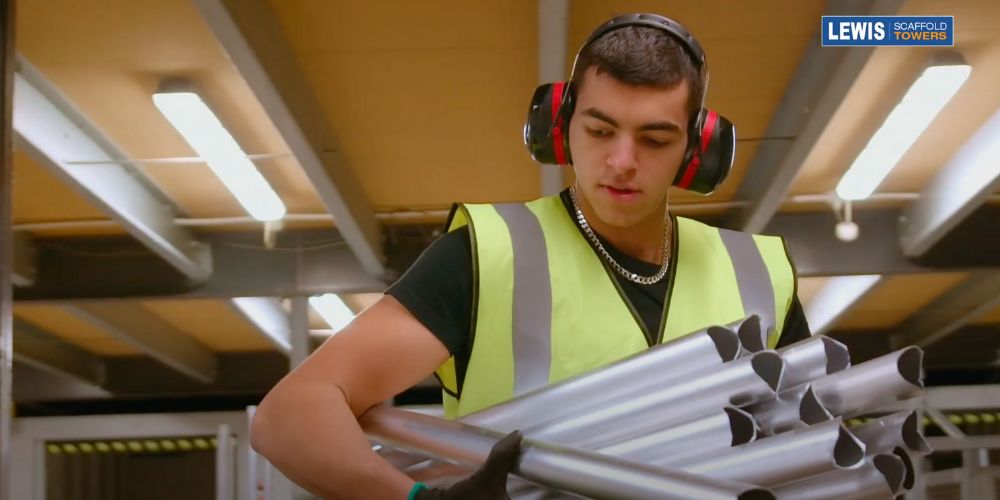
The horizontal notched brace, like the diagonal brace, provides stability and prevents distortion, while the notches on both ends allow it to fit snugly against the bandstand legs.
Component 4: Stabiliser Bars
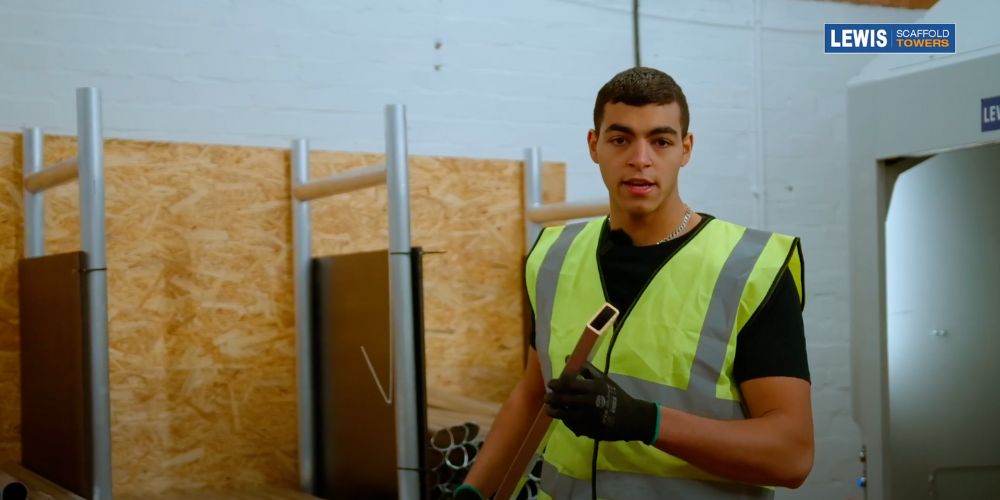
The stabiliser bar is a thick bar, welded at the base of the leg and diagonal support brace, which facilitates the stability and payload capacity of the bandstand system.
Component 5: Ring
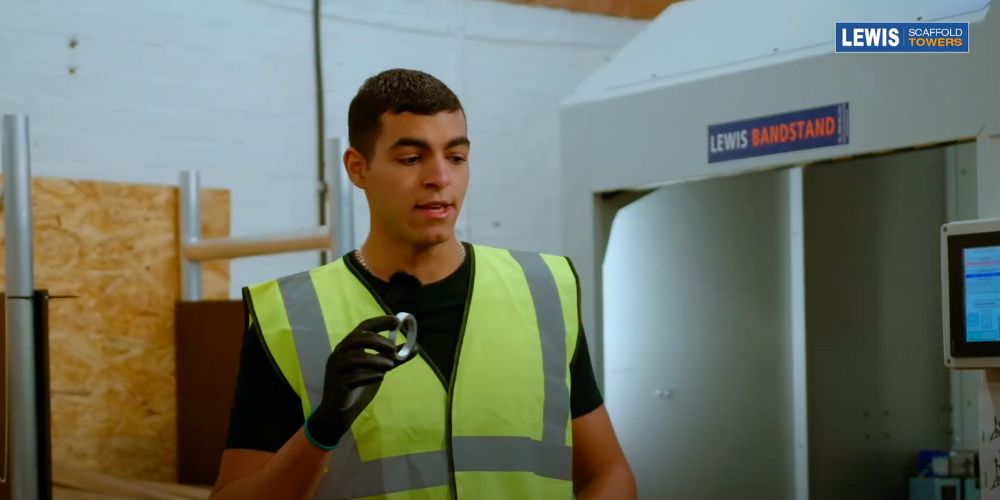
The ring at the top of the bandstand allows the staging post clamp to sit comfortably on top of it.
Production Process
Step 1: The Jig
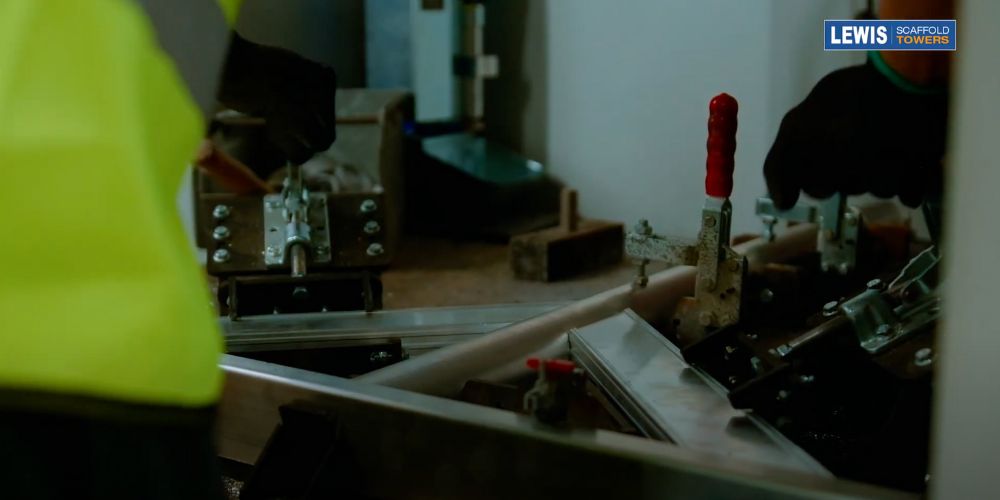
Now we have all components prepared, we place them inside the jig (a tool inside our welding machine that holds the components in place), it is time to start welding.
Step 2: Individually Welding the Bandstand Legs
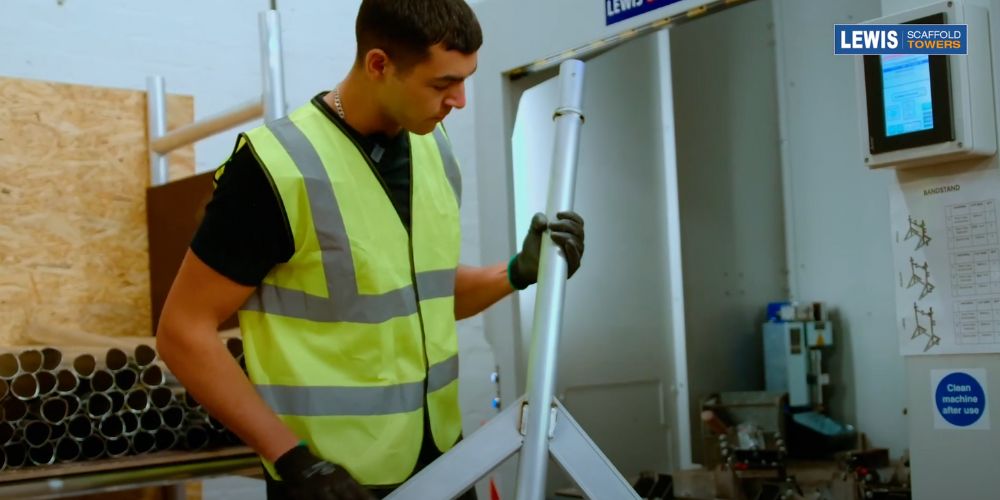
Our machine begins by welding one side of the bandstand leg, then cools it to a safe temperature, allowing the operator to flip the bandstand 180 degrees vertically. This enables the machine to weld the other side.
Once that bandstand leg is welded, we repeat the process to weld the other bandstand leg.
Step 3: Welding the Bandstand
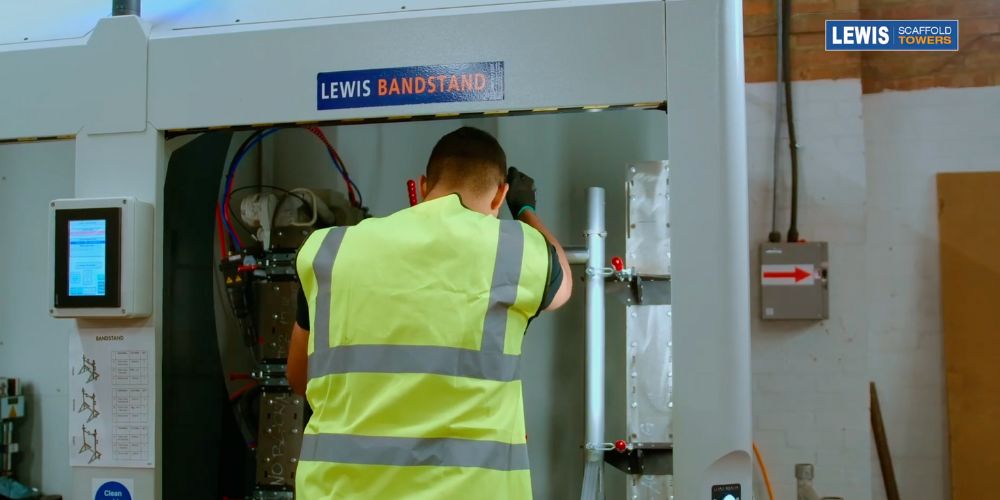
Now that we have two welded bandstand legs, it is time to weld them together.
This time, the legs are placed in the jig on each end, and the horizontal notched bars are placed in between the legs.
Once securely inside the jig, the operator visually checks for zero gaps to ensure a seamless weld.
The machine then welds the horizontal notched bars to the bandstand legs on the left and right sides. It does this on the back side first.
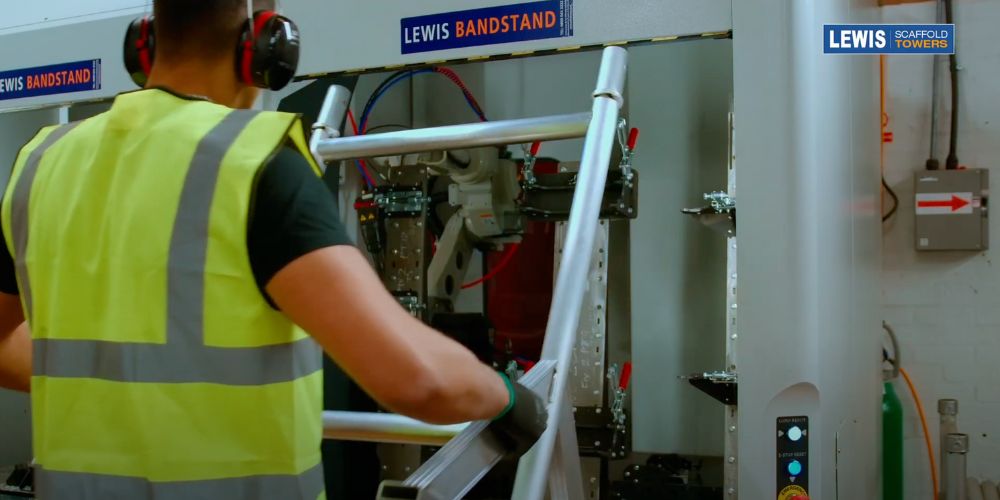
Once cooled, the operator horizontally rotates the bandstand 180 degrees and fixes it into place with a hammer, while wearing noise-cancelling ear mufflers, to allow the machine to weld the front side.
Step 4: Quality Control
Now that the other side is welded, the bandstand system is transported to the quality control area to ensure it meets our standards.
Step 5: Finishing Touches Area
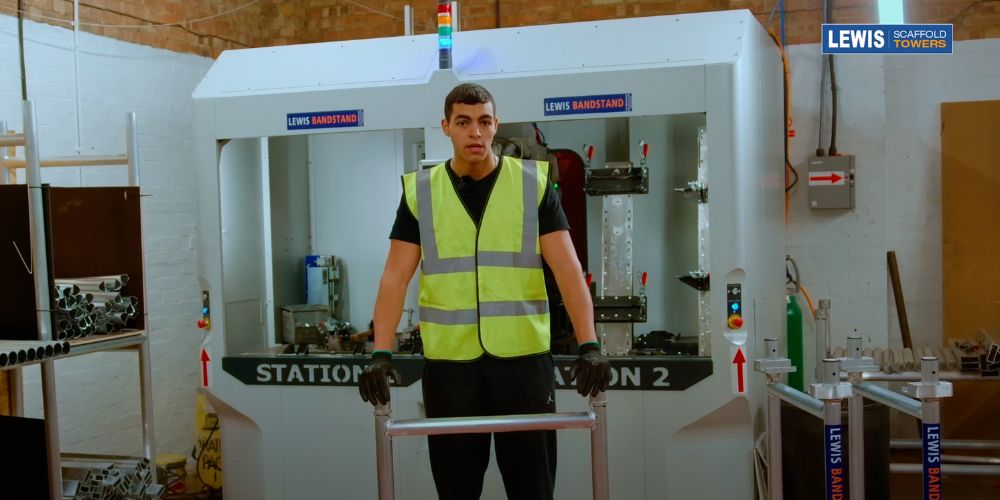
Once it passes quality control, it is transported to the finishing touches area, where black caps, staging posts and stickers are added.
Wrapping It Up
At LEWIS Access, we manufacture bandstand systems, temporary low-level work platforms (up to 1040 mm high) using metal frames (bandstands/trestles) supporting staging boards (up to 7200mm workspace). We offer heights of 1040mm, 880mm, and 710mm. The manufacturing process involves preparing components like cut and incised aluminium legs, diagonal and horizontal notched stability braces, stabiliser bars, and a top ring. The assembly uses a welding machine with a jig to hold the parts. Legs are individually welded on both sides, then joined with horizontal notched braces. Quality control and finishing touches (caps, posts, stickers) complete the process. You can buy our bandstand system here.


